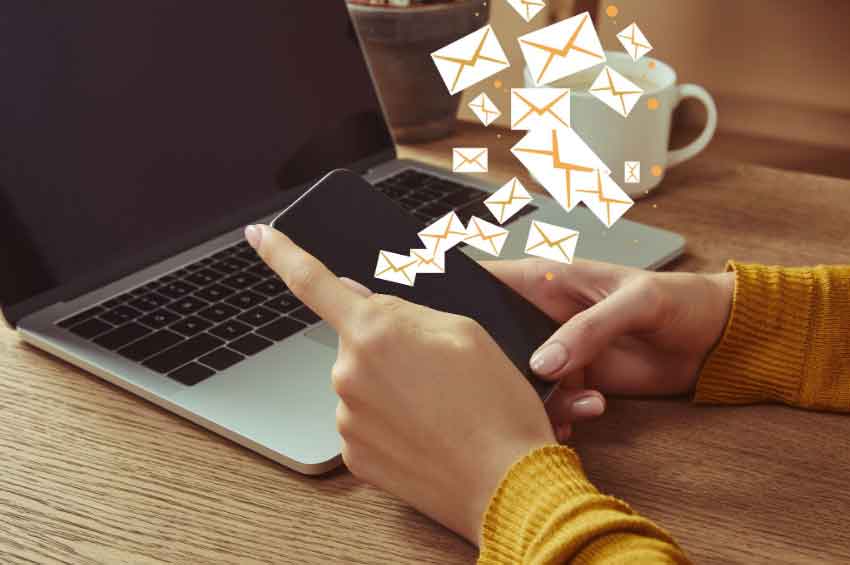Show:
How Can Email Marketing Fuel Your Overall Inbound Strategy
In today’s business landscape, making sales and marketing your products or services is not as easy or simple as it used to be.
Modern business owners need to adapt methodologies that help them connect with their customers and put an emphasis on their buying experience and journey.
Inbound marketing is a good example of this.

What is inbound marketing?
Inbound marketing aims to attract customers by creating content that is valuable and provides an experience that is personalized for that customer.
This gives a personal touch to the customer’s interaction with the company or product and helps develop a better relationship.
How can email marketing fuel the overall inbound strategy?
The most common and effective way of utilizing inbound marketing strategies in your business is to use email marketing.
Audience awareness
Emails help you target your exact audience, and as such give you the chance to engage with them in a more personal, empathetic way.
They help you identify your target audience and can give you insight into what they like or what they don’t like. We’ll discuss this in more detail later on in this article.
Be tech-savvy
A lot more people use email now than they did 5 years ago and as a result, your chances of reaching your audience through this avenue have greatly improved.
Email automation software makes sending email updates and letters incredibly easy too. You just have to set up the software to send the emails after a given action is taken by the customer, like signing up for your email updates.
This leads us nicely into:
Sign up forms
Email marketing is a highly effective way of getting quality leads with not a lot of effort.
If you include an offer bar on your site and make the visitor punch in their email address to get that offer, you will create an automatic lead generator that works more often than not.
This is by far the easiest and most efficient lead generation technique you can use for your business.
4 steps of inbound journey for email marketing
Now that we know why email marketing is so important for inbound strategies, it’s time to take a look at the 4 steps your email campaign has to take to convert leads into paying, long-term customers.

1. Attraction
The first piece of the puzzle is coming up with a way to get your site or ad visitors to actually give you their email addresses.
There are a myriad of ways you can try to do this. You can use popups, banners, social media advertising, PPC ads, and just generally good and useful content.
Slowly and surely, you’ll build an email list of interested people.
2. Nurturing
Now that you have your audience’s attention, it’s time to start a process called ‘nurturing’. Nurturing basically involves retaining your leads and getting them to turn into customers.
It’s good practice to offer valuable advice or insight to build trust and to cement your authority as a business that’s worth buying from.
3. Conversion
If your nurturing strategies worked, your audience is now ready to convert into a customer.
Using effective email drip campaigns and creating winning calls to action is critical at this stage. Coupons, discounts, free-trials, or demos are a great way to sweeten the deal for your customer.
One common question that comes up during this time is:
How can email marketing conversion be improved?

- Email marketing design
The design of your email is a critical part of your email marketing success, especially at the conversion stage.
Using catchy designs, graphics and bold colors is a great way to get attention and create a positive vibe.
- Testing the campaign
Like all things in life, you will have to test some things out to see what sticks and what doesn’t.
Every demographic and customer reacts differently to all the strategies we’ve mentioned, and you’ll likely have to do some test runs to see your conversion rates, email opt-ins, etc.
You can then change or adapt your campaign depending on what the changes were and how drastic.
4. Advocating
This is the post-sales stage where you have to fight to keep your customer’s attention.
Repeat customers are always better and the only way to get them to buy your product or services again is to follow up with more offers, related products they might like to buy or even asking for feedback on your service.
Email types and their uses
There are many types of emails for different purposes. Let’s take a look at some of the most common ones now:
1. Promotional emails
As their name suggests, promotional emails are used for promotions or deals your business might be running. They work to increase awareness about your products and what you offer. The main goal with promotional emails is to get the email reader to convert.
2. Relational emails
Relational emails are the exact opposite of promotional emails. Instead of directly getting the customer to purchase your product, relational emails focus on building a good relationship with the customer to increase their trust in the brand.
This is done by providing free information like articles, advice, welcome posts, updates, etc. Customers that trust your business are more likely to actually buy your product, so relational emails are an important part of the email flow.
3. Transactional emails
Transactional emails are sent as a response to a customer’s actions. Order confirmations, receipts, coupon codes, shipping information, etc., are all examples of transactional emails. They serve to make the customer feel well taken care of and help keep them updated on the proceedings of their order.
What does every email marketing strategy need?
Now that you know the basics, let’s take a look at some things that can lead you down the path of success with email marketing.

1. Plan your content
You need to decide what flow or structure your email sequences are going to have. Blindly going through email marketing will never be as effective as actually planning what you’re going to be sending and exactly when.
2. Catchy Subject line
If your reader doesn’t even open your emails, how will they get to read all the hard work you’ve put into your email marketing campaign? The answer lies in your email’s subject line.
Don’t use generic words like ‘Update’ or ‘Welcome’. Your customer probably gets dozens of emails of a similar nature every day and they will never open your email.
Instead, go for catchy subject lines like “Welcome to the family (NAME)!” to get your reader interested and more likely to click in.
3. Writing the content
Now for the actual content itself. It’s important to frame your content in accordance with what your goal for the email is. Relational emails can be long form as they are more informative, but promotional emails should be much smaller. Use concise, smart copy to convey the information or points clearly and make sure your content matches the pictures or graphics you’re using in your email.
If your graphics are friendly and colorful, make sure your copy mimics the same tone by being casual and friendly and vice versa.
Conclusion
We hope this article helped answer your questions on inbound marketing and how emails can help take your marketing campaigns to greater heights.
Be sure to check out the rest of our blog, where we share useful information related to business optimization, employee productivity, and of course internet marketing. Along with making superior web products and apps, we also want to promote the value of in-depth marketing.

 Return to Previous Page
Return to Previous Page








